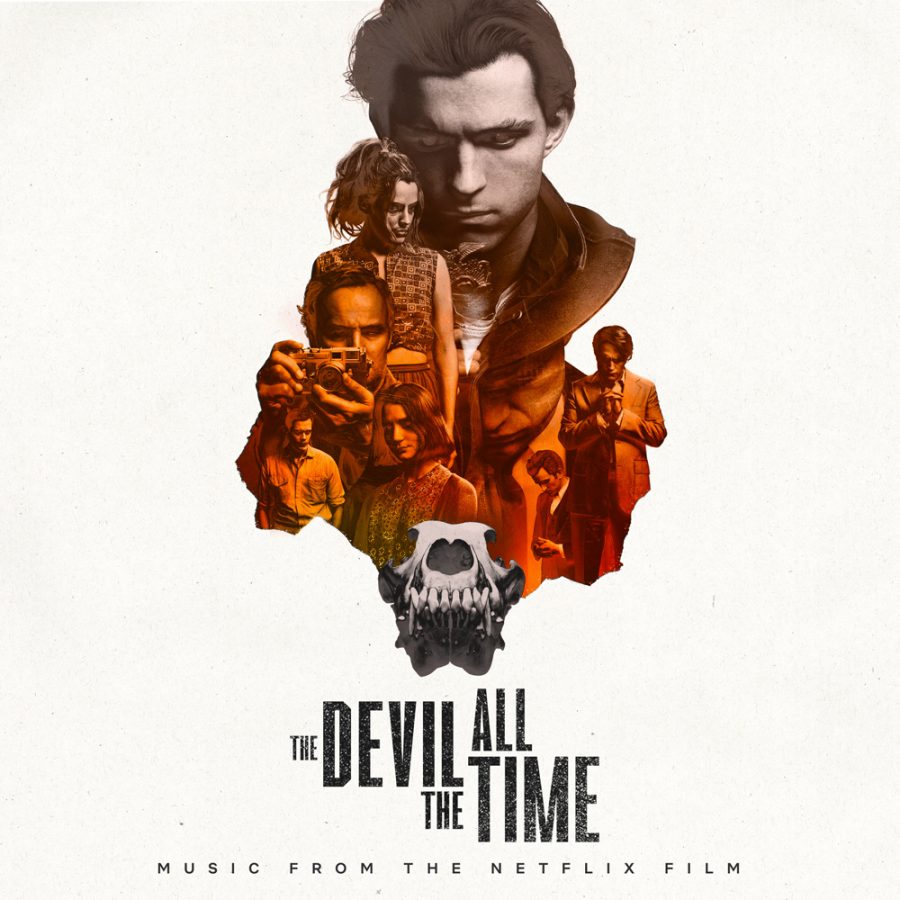Review: The Devil All The Time is not for the faint of heart
The Devil All The Time may be too dark and ghastly for many viewers
Photo Netflix
The Devil All The Time movie poster (2020), courtesy of the production page on IMDB.
September 29, 2020
The Devil All The Time has the potential of becoming a modern cult classic.
The complex plot and writing style of Donald Ray Pollock’s book was brought to life on screen by the magic of Antonio Campos in this 2020 Netflix Original Film. This movie is highly popularized by its mainstream cast, but the quality of the movie goes so much further than that.
This western-gothic period drama tells the story of Arvin (Tom Holland) as he tries to protect the people he loves from corrupt and wicked characters. This movie is not for the faint of heart.
Campos’ use of 35 mm film rather than digital sets the grim mood of the story by providing a sharper definition to the image. Coupled with his dark imagery, the tone is immediately set within the first few minutes of the movie when Willard Russell (Bill Skarsgård) stumbles upon a man being crucified in the South Pacific during World War II. Though we don’t know it yet, this image sets up a lot of later scenes.
The structure of the film is set up chronologically, first telling the story of the generation before our main characters, as well as what brought these characters to their place in the story. The plot is given bits of clarity throughout by an omniscient narrator, whose voice is provided by none other than the author of the original novel himself: Donald Ray Pollock.
Pollock’s dry, sardonic observations bring a rich authenticity to this dark and unnerving story. Having this type of narration— someone we don’t know explaining certain aspects of the characters and the story— allows the audience to be put into the action even further, making us feel things on a different level.
The way viewers bond with the characters in this story is also because of this structure. Like with any good story, we don’t fully understand the characters and even the events they experienced when they were younger until much later in the movie. Watching The Devil All The Time was like playing connect the dots—we may think we know how the big picture will turn out, but only by completing the picture can we know we were wrong.
With all the twists, turns and heartbreaking moments of this film, I can not tell you how many times I gasped out loud or even started crying— and I’m not usually one to cry during movies. This is not only because of the excellent characterization (which is a plus), but also because of how dark this movie is. It explores many themes regarding violence, which taint the edges of this film, and religion, which taints its heart, both without giving the audience a break. We grovel in the violence and unpleasantness the characters suffer, leaving me to often wish for even a sliver of light.
Considering that the novel this film was initially based on was quite dense, the filmmakers had to take many things out of the movie. However, I’m not that mad at this. The Devil All The Time is grim in the most exciting ways, but the amount of betrayal and horrific acts in this movie is exhausting.
Of course, no matter how good the plot or idea of a story is, it would be incomplete without well thought out characters. While I liked this movie, I thought it lacked some depth compared to the novel. However, it is saved by its cast and characters.
In many horror/thriller/dramas, it’s easy to be mad at the protagonist for making dumb choices and getting themselves into the mess they’re in. Chris, the main character from Get Out, was one of those characters I applauded for making the proper decisions needed to survive – finally, a smart main character! I feel the same way about Arvin. In the movie, he is placed in many dangerous situations in which he has to take drastic measures to survive. It is so satisfying to see him make those decisions, where other characters may not have.
Although, it is essential to know that these situations are often brought on by the anger and violence gifted to him by his father. His deep-rooted hatred for religion doesn’t help either. Yet, we can forgive the nature of this character, not only because we know how he was raised, but why he does the things he does: to protect the people he loves.
Though it was weird to see some of my favorite actors in darker roles than they may be known for (like Tom Holland as Spiderman, or Robert Pattinson as Cedric Diggory), the juxtaposition of actors in their native roles (such as Bill Skarsgård in IT or Hemlock Grove) helped immerse me in the film. I still laughed when I heard Pattinson’s southern accent, though.
The movie has many dark themes and challenges many beliefs on the abuse of power and religion in a godless land, taking this film down a very dark road. Everyone is a sinner in The Devil All The Time— each character playing the distinct role of predator or prey, with Arvin often playing the role of both. The Devil All The Time showcases the effects that violence and religion have on multiple generations, with the older often passing their sins onto the younger. This is especially prevalent in Arvin’s character, as the sins of his father is a tragic cross to bear.
With its run time of 140 minutes, The Devil All The Time is a lot to unpack and covers things too dense for even this review to cover. There is not a moment of screen time in which something bigger is at play. You have to keep your eyes peeled at all times. Blink, and you’ll miss it.












